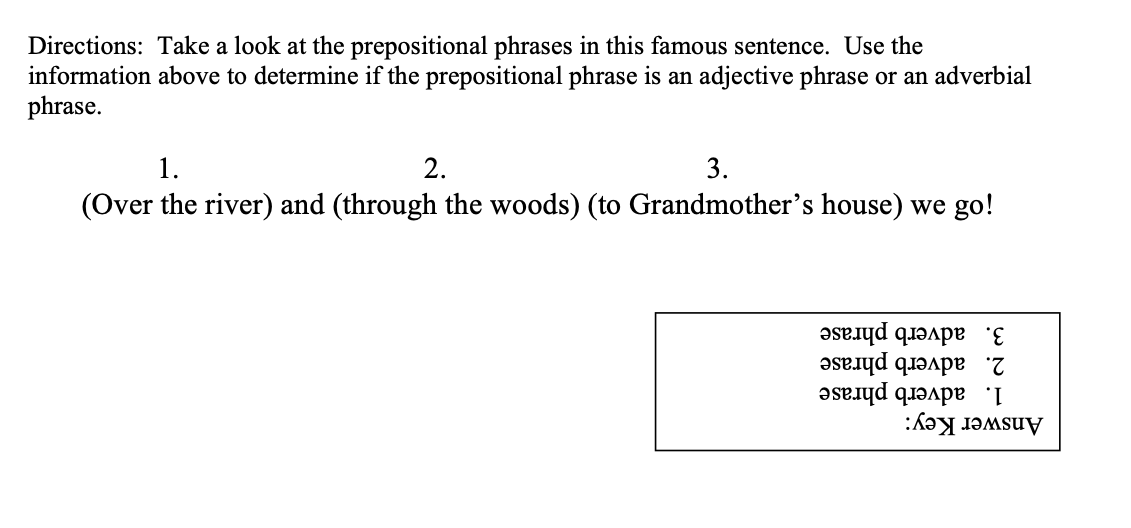What is a prepositional phrase?
/Have you ever tried to describe something without using a prepositional phrase? Well, it’s almost impossible! Although prepositional phrases are not a requirement in every sentence, they certainly do help us: (a) add details, (b) create interest, and (c) make spatial and other relationships clear.
A prepositional phrase begins with a preposition (P) and ends with an object of the preposition (OP). The OP can be a noun, pronoun, gerund, or clause.
A prepositional phrase can also include one or more words between the P and OP. These words are called modifiers because they modify the OP. Since the object of the preposition is a noun, pronoun, gerund, or clause, modifiers within the prepositional phrase will most likely be adjectives (Adj). Adjective labels include: (a) regular adjectives (Adj), (b) article adjectives (A), (c) possessive pronoun adjectives (PPA), and (d) possessive noun adjectives (PNA).
Did you know that a prepositional phrase can modify like an adjective or adverb? It’s true. Prepositional phrases can function either as adjectives by modifying nouns and pronouns or as adverbs by modifying verbs, adjectives, and adverbs. These prepositional phrases add important details to sentences, and their location can help you identify them as an adjective or adverb modifier.
Here are some facts to know about an adjective phrase (or adjectival phrase):
An adjective phrase modifies a noun or pronoun.
A prepositional phrase functioning as an adjective modifies like a one-word adjective by telling what kind or which one.
More than one adjective phrase can be used to modify the same noun.
Location:
· An adjective phrase usually comes directly after the noun or pronoun it modifies.
· If two prepositional phrases are located together, with one right after the next, most of the time, the second phrase will be an adjective phrase that modifies the object of the first phrase.
· Sometimes, the prepositional phrase that comes directly after a direct object will not modify the direct object, but will modify the verb.
Two examples of an adjective phrase are listed below:
Here are some facts to know about an adverb phrase (or adverbial phrase):
An adverb phrase usually modifies a verb but can also modify an adjective or adverb.
A prepositional phrase functioning as an adverb phrase modifies like a one-word adverb by telling how, when, where, why, or to what extent.
Location:
· When an adverb phrase modifies a verb, it can be located directly after the verb, at the beginning of the sentence, or it can be separated from the verb it modifies by being located somewhere else in the sentence.
· An adverb phrase can also follow another prepositional phrase.
Two examples of an adverb phrase are listed below:
It’s Application Time! Review the sentence below during your discussion on prepositional phrases. Take notice of how the prepositional phrases help us: (a) add details, (b) create interest, and (c) make spatial and other relationships clear.
If you like what you see, we invite you to learn more about our award-winning curriculum, Shurley English. Our program provides a clear, logical, and concrete approach to language arts. Students grasp and retain even the most challenging concepts. Shurley English utilizes all learning styles and provides and logical connection between grammar, skills, and writing. It is truly "English Made Easy" for all of your students!
For more information, visit us at http://www.shurley.com.









































































































